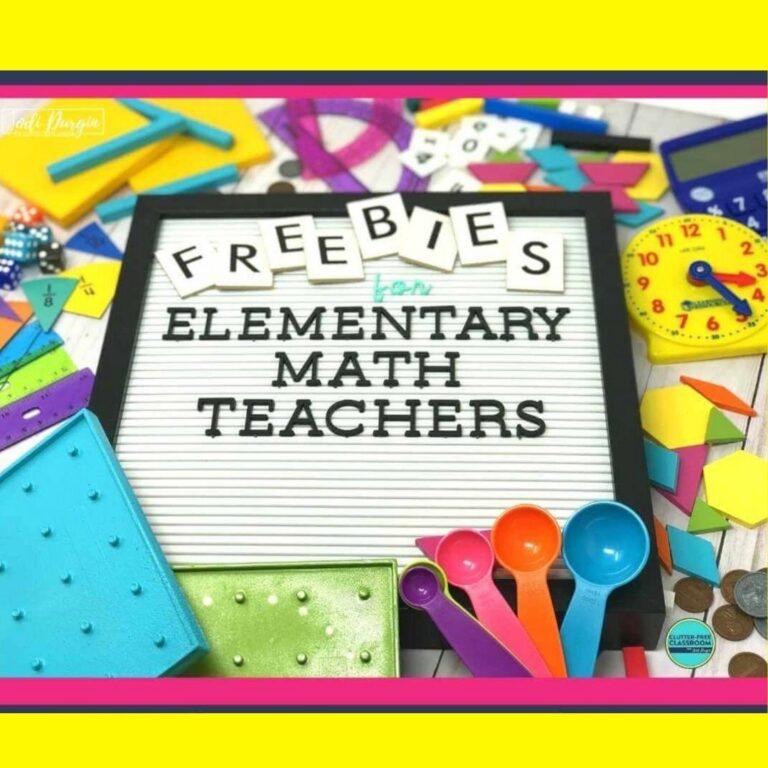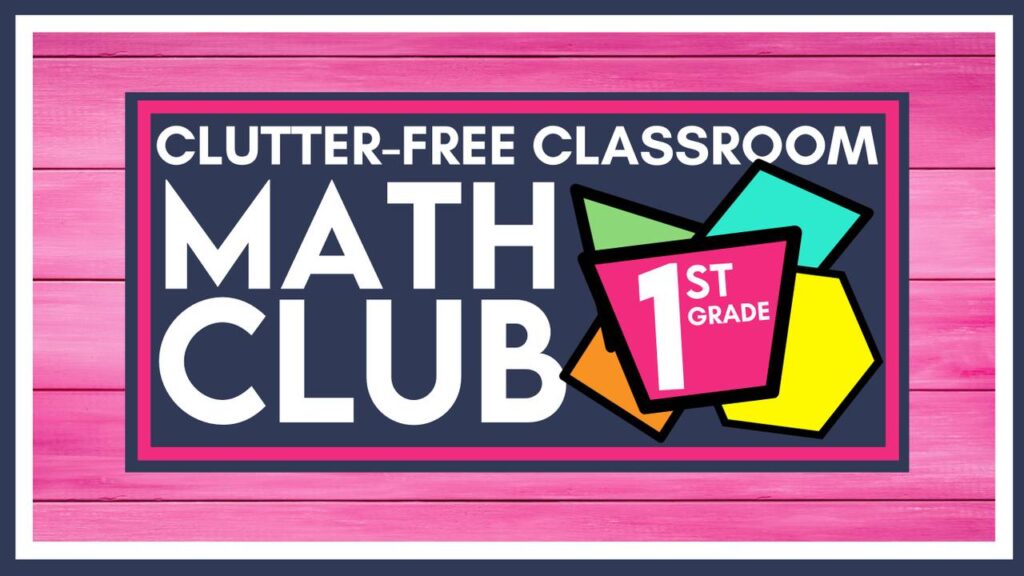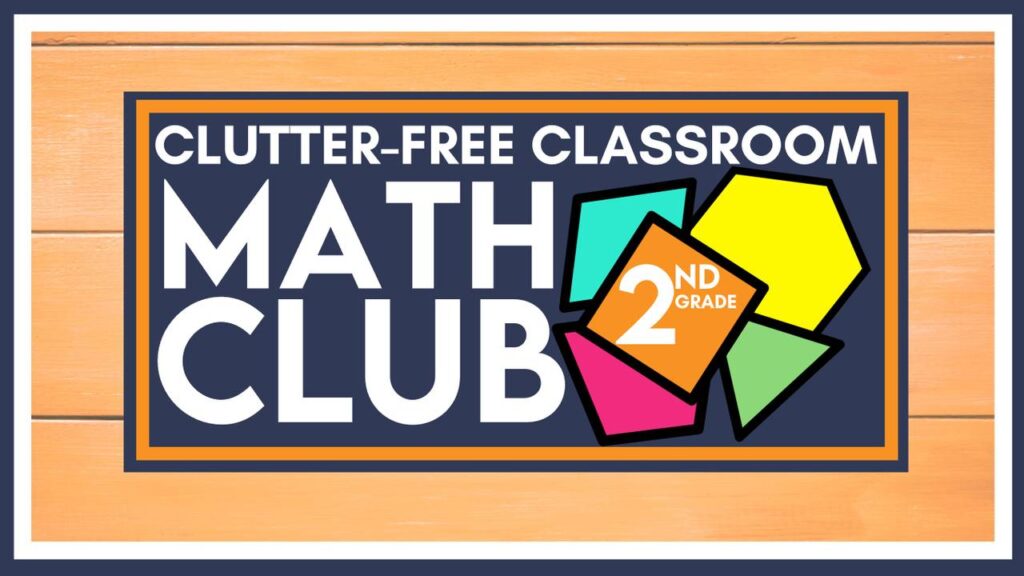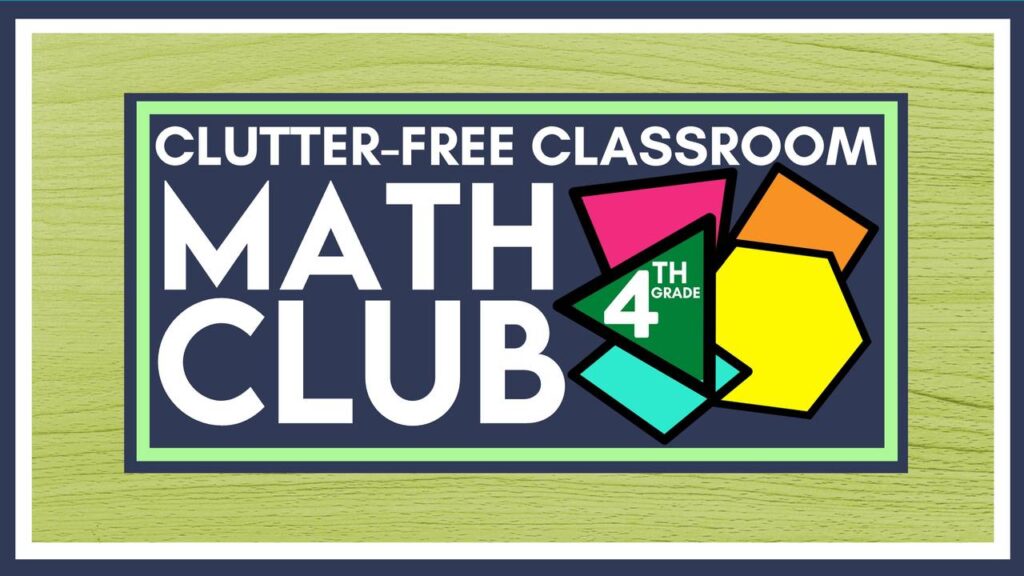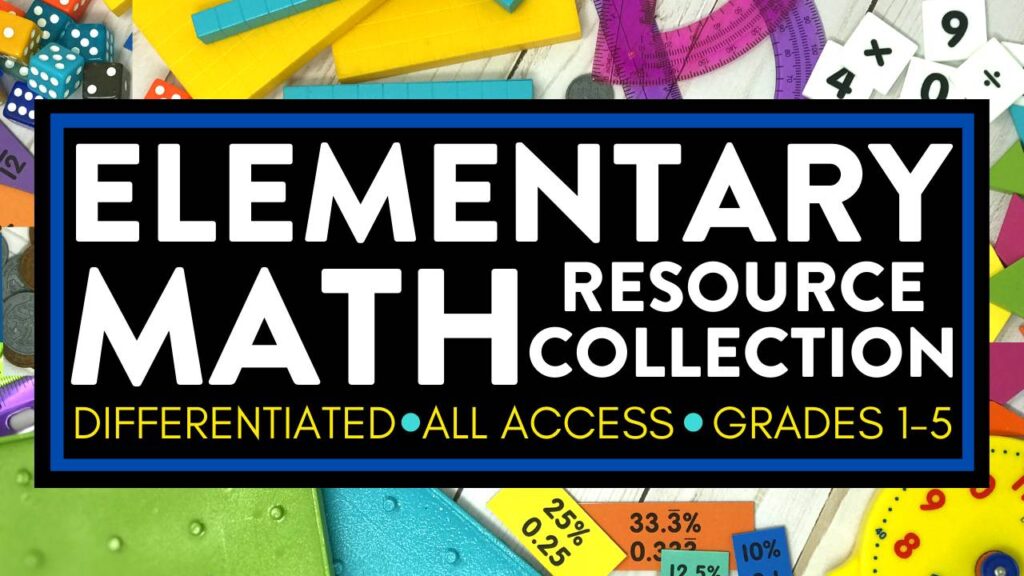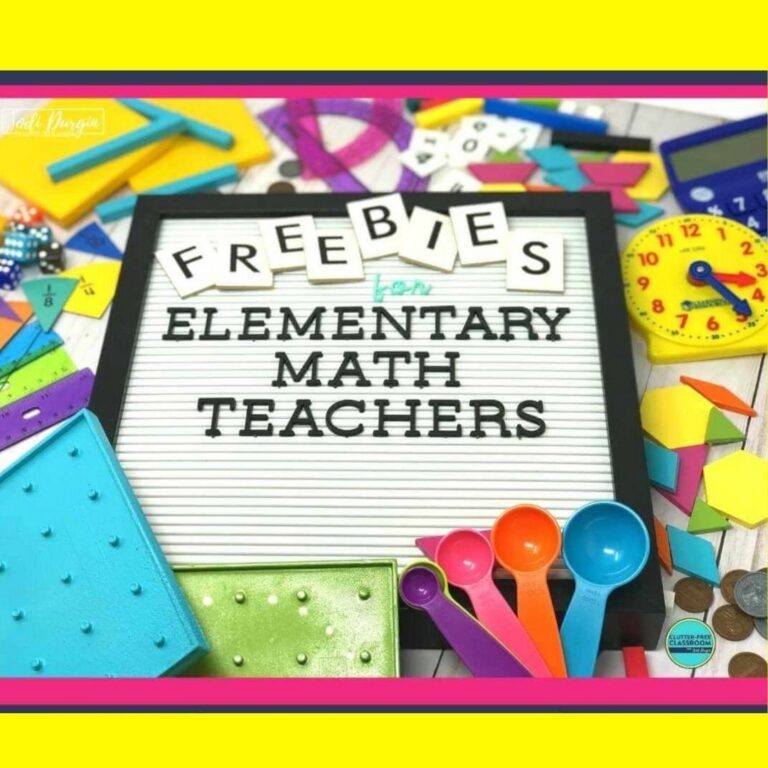Math accommodations are an incredibly important component of best practice elementary math instruction. Making curriculum accessible to students is necessary in order for each child to reach his or her highest potential. How can we do that considering the diversity in twenty-first century classrooms? There are three answers. First, offer differentiated instruction to all your students. Second, follow the list of modifications and accommodations identified in your students’ IEPs and 504 plans. Third, use Universal Design for Learning (UDL). Learn about all three below.
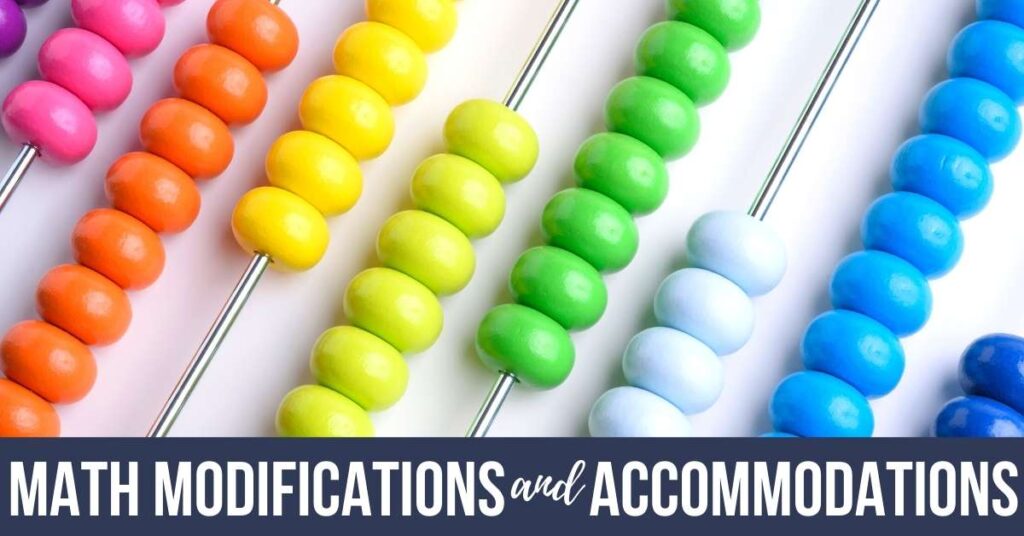
What is an IEP?
An Individualized Education Plan (IEP) is a legal document. It outlines the accommodations, modifications, and services that a student with learning differences will receive from their school system. The Individuals with Disabilities Education Act (IDEA) requires schools to provide special education services to students who are eligible. Eligibility is based on having 2 things. First, the student must have one or more of the 13 identified conditions. Second, this must be in conjunction with the condition having an adverse impact on the child’s performance in school. For reference, the 13 identified conditions (also referred to as the 13 types of learning disabilities) are:
1. Specific learning disability (SLD)
The term “SLD” covers an identified group of learning disabilities. These affect a learner’s ability to read, write, listen, speak, reason, or do math. Some examples include dyslexia, dysgraphia, dyscalculia, auditory processing disorder, and nonverbal learning disability.
2. Other health impairment
“Other health impairments” include conditions such as ADHD that limit a student’s strength, energy or alertness.
3. Autism spectrum disorder (ASD)
ASD is a developmental disability. It affects a child’s social and communication skills. It can also impact behavior.
4. Emotional disturbance
A child identified as having an “emotional disturbance” may be diagnosed with any of the following disorders listed below. Some of these might be covered under “other health impairment” as well.
- anxiety disorder
- schizophrenia
- bipolar disorder
- obsessive-compulsive disorder
- depression
5. Speech or language impairment
A “speech or language impairment” covers a number of communication problems. Those include stuttering, impaired articulation, language impairment or voice impairment.
6. Visual impairment, including blindness
A child who has a vision impairment could have partial sight or blindness. Student’s whose vision problems can be corrected with eyeglasses do not qualify.
7. Deafness
Students with a diagnosis of deafness have a severe hearing impairment and are not able to process language through hearing.
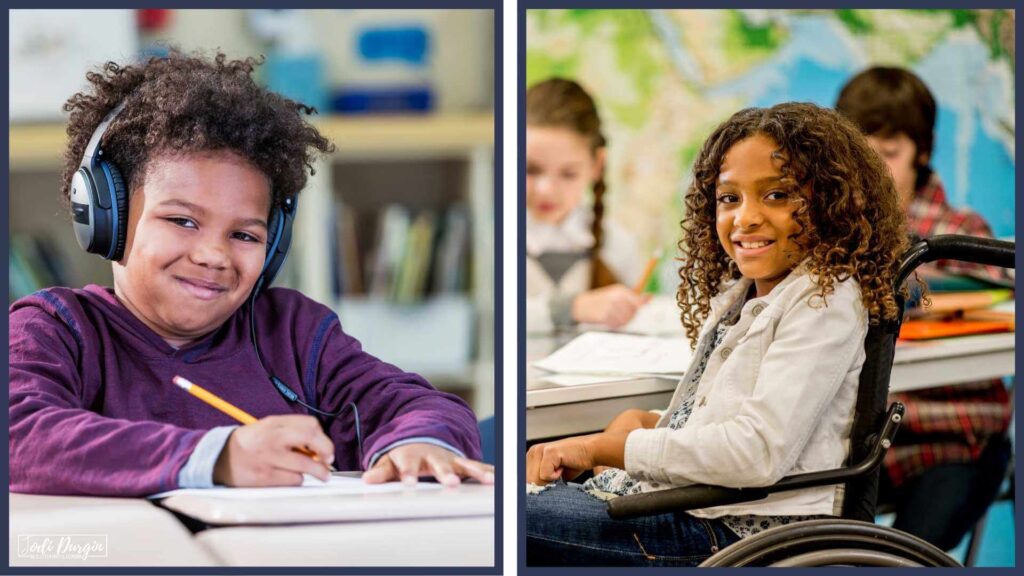
8. Hearing impairment
Hearing loss that can change or fluctuate over time and does not fall under the criteria of a diagnosis of deafness is a hearing impairment. It is important to keep in mind that this is different from an auditory processing disorder which is an SLD.
9. Deaf-blindness
Children with a diagnosis of deaf-blindness have both hearing and visual impairments.
10. Orthopedic impairment
Any impairment to a child’s body, no matter what the cause, is considered an orthopedic impairment.
11. Intellectual disability
Children with this type of disability have intellectual abilities that are classified as below-average. They may also have poor communication, self-care, and social skills. Down Syndrome is one example of an intellectual disability.
12. Traumatic brain injury
This is a brain injury that impacts learning. It is typically caused by an accident as opposed to a cognitive disability.
13. Multiple disabilities
A child with multiple disabilities has more than one condition covered by IDEA.
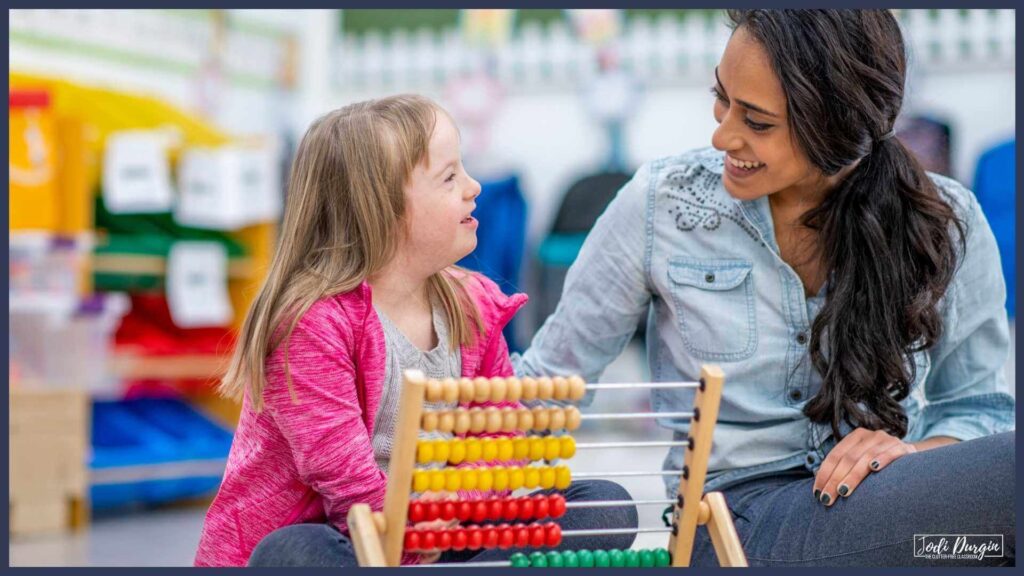
What is the Difference Between an IEP and a 504 Plan?
An IEP sets learning goals and describes the services a school system will deliver. IEPs must include:
- A child’s present level of academic and functional performance
- Annual education goals
- A schedule of when services will start, how often they will occur, and how long they will last
- A list of accommodations (changes to the student’s learning environment)
- A list of modifications (changes to what a student is expected to learn or know)
- A description of how the learner will participate in standardized testing – Check out these tips for standardized testing!
- How the student will be included in general education
Unlike an IEP which MUST be a written document with specific items included, 504 plans are not standard. Typically they include the following:
- Documentation of specific accommodations (e.g. math accommodations), supports, or services
- The names of the professionals who will deliver those accomodations, supports, or services
- The name of the person who is responsible for ensuring the implementation of the plan is done properly
What is an Accommodation?
An accommodation is a small change made to remove a barrier that is preventing a child from accessing learning experiences. Although accommodations can be included in an IEP or 504 plan, students who do not have special education coding or any formal documentation can still receive accommodations. These come directly from their teacher. It is important to note that accommodations change how kids learn, but not what they are learning. An example of an accommodation is allowing a 5th grader to have a math fact sheet in their math folder.

What is the Difference Between Accommodations and Modifications?
As mentioned above, accommodations are small changes made for students so they can access the content. Modifications, on the other hand, are much more significant changes. They are made to remove a barrier that is preventing a child from accessing learning experiences. In addition, unlike an accommodation, modifications can only be made if specified by an IEP. Most importantly, modifications can change what students are learning, whereas accommodations change how students are learning.
4 Types of Accommodations
There are four basic types of accommodations (also known as differentiation strategies). These are: presentation, response, setting, and timing/scheduling. Presentation accommodations give a student access to instructional materials in a non-standard format. Response accommodations provide different ways for a student to display their knowledge and understanding. Setting accommodations allow a student to work in a different location. Timing or scheduling accommodations permit a student to work at their own pace and time. It’s important to consider all four of these types of accommodations when lesson planning so you can provide appropriate instruction.
Examples of General Presentation Accommodations
Below are examples of general presentation accommodations.
- Give instructions verbally and in writing.
- Repeat instructions verbally.
- Check in with student after giving directions.
- Provide written instructions in audio format.
- Increase the print size of worksheets.
- Reduce the number of items per page.
- Put arrows on student work to identify steps to take.
- Highlight important numbers, words, and phrases.
- Offer a calculator when appropriate.
- Present information in the form of songs.
- Extend access to speech-to-text technology.
- Permit access to text-to-speech technology.
- Give notes from the lesson.
- Provide graphic organizers that the student can fill in during the lesson.
- Pre-teach new concepts and vocabulary.
- Arrange worksheet problems from easiest to hardest.
- Implement small group and one-on-one instruction.
- Read aloud word problems to the student.
Examples of General Response Accommodations
Below are examples of general response accommodations.
- Require the completion of fewer problems.
- Allow the student to record their answer in the test book instead of on a separate answer sheet.
- Scribe response for the student.
- Provide graph paper to organize math problems.
- Give the option of typing responses.
- Offer the option of having someone read and point to the response choices.
- Provide a trained peer partner.
Examples of General Setting Accommodations
Below are examples of general setting accommodations.
- Provide preferential seating.
- Offer one-on-one instruction.
- Give the student a separate desk to access in a quiet spot in the classroom.
- Invite the student to work in a separate room.
- Provide small group instruction.
Examples of General Timing/Scheduling Accommodations
Below are examples of general timing and scheduling accommodations.
- Break up instructional time into smaller sessions.
- Provide extended time.
- Offer breaks.
- Decrease the number of homework problems.
- Set a time limit on how long the student spends on homework per night.
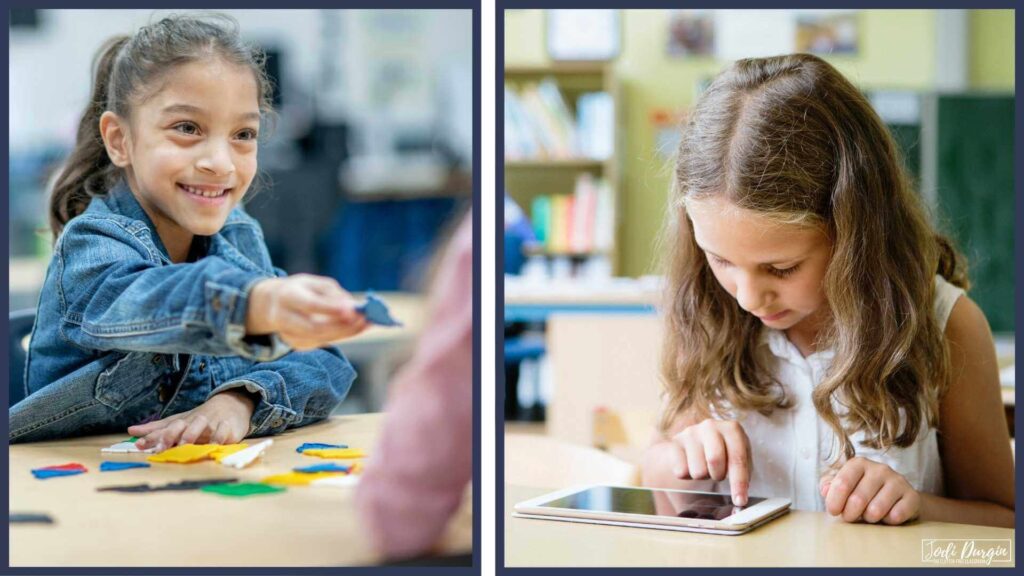
Math Accommodations for Specific Learning Differences
The lists of strategies below will help you differentiate in math. This will ideally result in all of your students reaching their highest potential. It covers topics ranging from accommodations for ADHD and anxiety to dyslexia accommodations. They are broken down by learning differences. This makes it so you can easily navigate to the sections that relate to your population of students this year.
List of Math Accommodations for Students with Dyslexia
Below is a list of accommodations for students with dyslexia.
- Simplify written directions.
- Use or create worksheets with large print.
- Provide colored strips.
- Give the student a partner who is responsible for writing.
- Offer extra time for tasks that require reading and writing.
- Allow the student to give answers orally.
- Give access to voice-to-text technology.
- Create or find worksheets with large amounts of space to write in.
- Offer multiple choice instead of open response.
- Keep a number and letter strip on the student’s desk.
- Provide sentence starters for open response questions.
- Display samples of model work.
- Allow the student to show what he or she knows through a video or oral report.
List of Math Accommodations for Students with ADHD
Below is a list of accommodations for students with ADHD.
- Allow the student to keep a math fact sheet on his or her desk.
- Permit the use of a calculator when appropriate.
- Break up tasks into smaller tasks.
- Offer short breaks.
- Check in with the student throughout the lesson.
- Provide graphic organizers rather than copying from the board from scratch.
- Seat the student in a quiet area near at least one role model.
- Assign tasks one at a time.
- Guide the student in setting short term goals.
- Give short clear directions.
- Engage the student during the lesson.
- Provide friendly reminders to stay on task as needed.
- Allow the student to stand while working.
- Remind the student to check their work.
List of Math Accommodations for Students with Anxiety
Below is a list of accommodations for students with Anxiety.
- Teach self-calming strategies and encourage the student to use them.
- Invite the child to pick a spot where they are most comfortable.
- Break down tasks into smaller tasks.
- Check in with the student regularly.
- Allow the student to present projects to the teacher or videotape themselves.
- Give additional time to complete assessments.
- Offer the option of taking an assessment in a different space.
- Give prior notice for assessments.
- Recommend that the student create a formula sheet to be used for assessments.
- Provide a word bank for assessments.
List of Math Accommodations for Gifted Students
Below is a list of accommodations for gifted students.
- Encourage independent studies and investigations.
- Offer student choice.
- Ask higher order thinking questions.
- Invite a student to explore a different point of view and compare and contrast.
- Brainstorm with a student what type of project they would like to do.
List of Math Accommodations for Students with Autism
Below is a list of accommodations for students with autism.
- Provide clear and specific directions.
- Build upon the student’s strengths.
- Offer sensory tools and breaks as needed (playground equipment, carrying heavy objects, chair push ups, fidgets, and gum).
- Take movement breaks.
- Utilize appropriate lighting in the classroom.
- Provide a quiet learning environment.
- Offer a quiet spot in the classroom to work.
- Use a picture schedule.
- Provide choices.
- Implement a visual communication system.
- Invite the student to type responses on a computer.
- Utilize timers.
- Seat the student near materials and instruction.
- Limit distractions at the student’s desk.
- Use direct and straightforward word problems.
- Stray from teaching the strategy of looking for keywords in word problems.
- Explain math rules clearly and concisely.
- Use the word “number” instead of “amount” due to it being more concrete.
List of Math Accommodations for Students with Visual Impairment
Below is a list of accommodations for students with a visual impairment.
- Use or create worksheets with large print.
- Seat the student near the front of the class.
- Utilize tools (Visiobook or handheld video magnifier).
- Use a magnifying glass.
- Provide braille tools (keyboard, resources, etc.).
- Offer a talking calculator.
- Implement the use of a document camera during whole group instruction.
- Give tactile models when applicable.
List of Math Accommodations for Students with Physical Disabilities
Below is a list of accommodations for students with physical disabilities.
- Provide notes for the lesson prior to the start of the lesson.
- Encourage the student to use an audio recorder during class.
- Implement assistive technology (adaptive mouse, voice activated software, computers with or without touch screens, large pencil, and pencil grips).
- Invite the student to use a slant board or sloped writing table.
- Allow the student to stand during lessons.
- Provide special paper that has large spacing or bold lines.
- Utilize textured mats or a clipboard to prevent work from moving.
- Give a digital copy of the textbook if applicable.
List of Math Accommodations for Students with Hearing Impairment
Below is a list of accommodations for students with a hearing impairment.
- Use an FM system.
- Utilize a sign language interpreter.
- Turn the closed captions on when watching videos.
- Ensure that the student can see your face when you are speaking.
- Repeat student questions and responses made by other students.
- Speak clearly.
- Document class discussions on a white board, chart paper, or on a document projected on the board.
- Provide graphic organizers and information related to the lesson prior to the start of the lesson.
- Make visual aids to support the lesson.
What is UDL?
Universal Design for Learning (UDL) is a tool for planning instruction. It enhances learning for all students by 1) considering research that shows how we learn, 2) assisting in the design of a flexible curriculum that teaches to the margins instead of the average, and 3) utilizing its three principles (representation, action and expression, and engagement).
As part of the three principles, it is imperative to expose students to the information in multiple ways, invite students to show what they know in different ways, and offer students choice in order to engage all learners throughout the learning process. This is best practice teaching, which means it will benefit all your students including those with learning differences. This philosophy will truly transform your teaching and ensure you’re meeting all of the needs of your students!
Math Resources for 1st-5th Grade Teachers
If you need printable and digital math resources, then check out my time-saving math collections below. They will equip you with a massive library of resources at your fingertips.
Try Our Math Resources for Free!
In closing, we hope this list of math accommodations and information about 504 plans and IEPs are helpful. Bookmark this page so you can refer back to it as you plan your upcoming math lessons. We would love for you to try these math resources with your students. They offer students opportunities to practice grade level concepts and skills in fun and engaging ways. You can download worksheets specific to your grade level in these free printable math activities for elementary teachers.
Check out these other math resources!

